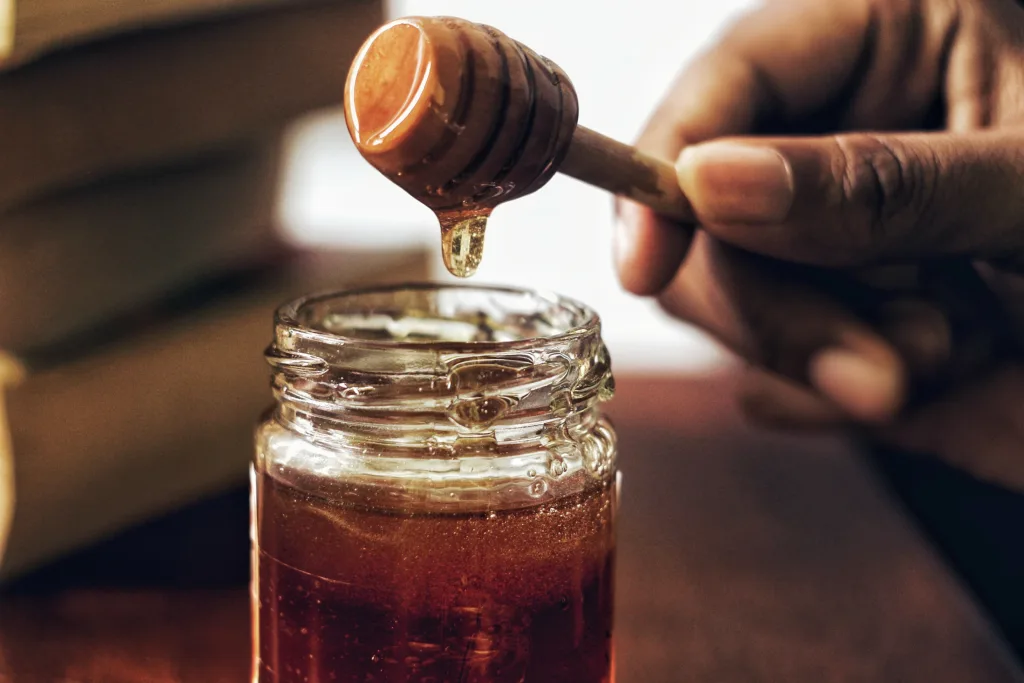Fructose is a monosaccharide, also known as fruit sugar, that is found naturally in many fruits, vegetables, and honey. It is a simple sugar that has the molecular formula C6H12O6, just like glucose and galactose. Fructose is unique among the monosaccharides in that it has a five-membered ring structure, which is called a furanose ring.
Disaccharides are formed from two monosaccharides and can be classified as either reducing or nonreducing. In the case of fructose, it provides an example of a disaccharide in which the acetal linkage joins the anomeric carbons of a glucose molecule to the anomeric carbon of a fructose molecule. This disaccharide is commonly known as sucrose or table sugar.
Sucrose is a non-reducing sugar because the two monosaccharide units are held tgether by a glycosidic linkage between C1 of α-glucose and C2 of β-fructose. Since the reducing groups of glucose and fructose are involved in glycosidic bond formation, sucrose is a non-reducing sugar.
On the other hand, fructose itself is a reducing sugar. All monosaccharides are reducing sugars, including glucose, fructose, and galactose. This means that they have a free carbonyl group that can donate electrons to other molecules. This property allows them to react with certain chemical reagents, such as Benedict’s solution or Fehling’s solution, to form a colored precipitate that indicates the presence of a reducing sugar.
Fructose is widely used in the food industry as a sweetener, particularly in soft drinks and other processed foods. Despite its sweet taste, excessive consumption of fructose has been linked to various health problems, including obesity, type 2 diabetes, and metabolic syndrome. This is because fructose is metabolized differently than glucose in the body and can lead to insulin resistance and other metabolic disorders.
Fructose is a monosaccharide that is commonly found in fruits, vegetables, and honey. It is a reducing sugar, unlike sucrose, which is a non-reducing sugar. Fructose is widely used in the food industry as a sweetener but excessive consumption can lead to various health problems. It is important to be mindful of our fructose intake and to consume it in moderation as part of a balanced diet.
Why Fructose Is Not Considered a Reducing Sugar
Fructose is a simple sugar found in many fruits, vegetables, and honey. It is a monosaccharide, meaning it contains a single sugar unit. However, fructose can also be found in a disaccharide form, where it is linked to glucose via a glycosidic bond. This disaccharide is known as sucrose, or table sugar.
The reason why fructose is not a reducing sugar is due to its chemical structure. A reducing sugar is a sugar that has a free aldehyde or ketone group, which can donate electrons to another molecule. This is important in many biochemical reactions, including the Maillard reaction, which is responsible for the browning of food during cooking.
In fructose, the carbonyl group is part of a five-membered ring structure known as a furanose. This means that fructose does not have a free aldehyde or ketone group, and therefore cannot act as a reducing sugar. Instead, fructose can only participate in reactions that involve the hydroxyl groups on its carbon atoms.
It’s worth noting that fructose can still be involved in other chemical reactions, including those that involve its hydroxyl groups. For example, fructose can react with amino acids to form advanced glycation end products (AGEs), which have been linked to varios health issues.
Fructose is not a reducing sugar because its carbonyl group is part of a ring structure, meaning it does not have a free aldehyde or ketone group. Instead, fructose can only participate in reactions that involve its hydroxyl groups.

Is Fructose a Reducing or Nonreducing Sugar?
Fructose is a monosaccharide, and as such, it is a type of sugar. It is commonly found in fruits, honey, and some vegetables.
When it comes to classification, fructose is considered a reducing sugar. This means that it has the ability to donate electrons to other molecules and, therefore, undergoes a chemical reaction known as a reduction.
Reducing sugars are those that have a free aldehyde or ketone functional group that can participate in a reaction with an oxidizing agent, such as Benedict’s or Fehling’s solution. This reaction results in a change of color, from blue to red, and is commonly used to test for the presence of reducing sugars in a sample.
It is important to note that fructose can also form disaccharides with other monosaccharides, such as glucose, to form sucrose, wich is a non-reducing sugar. Non-reducing sugars do not have a free aldehyde or ketone functional group and, therefore, cannot undergo the aforementioned chemical reaction.
Fructose is a reducing sugar when it exists as a monosaccharide but can form non-reducing sugars, such as sucrose, when it combines with other monosaccharides.
Is Fructose a Reducing Agent?
Fructose is a type of monosaccharide that is commonly found in fruits, honey, and some vegetables. As a monosaccharide, fructose is a reducing sugar, meaning it has the ability to donate electrons to oter molecules and undergo oxidation.
Fructose is considered a reducing agent because it has a free carbonyl group (-C=O) that can react with other molecules, such as Benedict’s reagent or Tollens’ reagent, to reduce them. When fructose reacts with these chemical reagents, it undergoes oxidation and the reagent is reduced, resulting in a color change that can be used to detect the presence of fructose.
In addition to being a reducing agent, fructose is also a source of energy for the body. It is metabolized in the liver and converted into glucose, which can be used by the cells for energy. However, consuming too much fructose can lead to health problems such as obesity, type 2 diabetes, and fatty liver disease.
To summarize, fructose is a reducing sugar and a reducing agent due to its ability to donate electrons to other molecules. It is also a source of energy for the body, but excessive consumption can lead to health problems.
Differences Between Fructose and Sucrose as Reducing Sugars
Fructose and sucrose are both types of sugars, but they differ in their chemical composition and properties. Fructose is a reducing sugar, meaning that it has a free aldehyde or ketone functional group that can be oxidized. On the other hand, sucrose is a non-reducing sugar, meaning that it does not have a free aldehyde or ketone functional group.
The reason for this difference lies in the way these sugars are structured. Fructose is a monosaccharide, wich means that it is composed of a single sugar unit. It has a ketone functional group on its second carbon atom, which can be oxidized to form a carboxylic acid. This makes fructose a reducing sugar.
Sucrose, on the other hand, is a disaccharide composed of two monosaccharides, glucose and fructose, joined together by a glycosidic linkage. This linkage forms between the anomeric carbon of glucose and the hydroxyl group of fructose. As a result, the free aldehyde group of glucose and the ketone group of fructose are involved in forming this linkage, which prevents them from being oxidized. This is why sucrose is a non-reducing sugar.
Fructose is a reducing sugar because it has a free ketone functional group, while sucrose is a non-reducing sugar because its constituent monosaccharides are joined together in a way that prevents their free functional groups from being oxidized.

Conclusion
Fructose is a simple sugar that is commonly found in fruits, vegetables, and honey. It is a ketohexose monosaccharide that is closely related to glucose but has a different molecular structure. Fructose can also be found in the form of a disaccharide, such as sucrose, which is a non-reducing sugar.
Although fructose is a natural sugar, excessive consumption of fructose has been linked to various health issues, including obesity, diabetes, and cardiovascular disease. Therefore, it is important to consume fructose in moderation and to choose whole foods that contan fructose, rather than consuming processed foods that are high in added fructose.
Fructose is an important component of our diet but should be consumed in moderation. By choosing whole foods and limiting our consumption of processed foods, we can ensure that we are getting the benefits of fructose without the negative health consequences.
